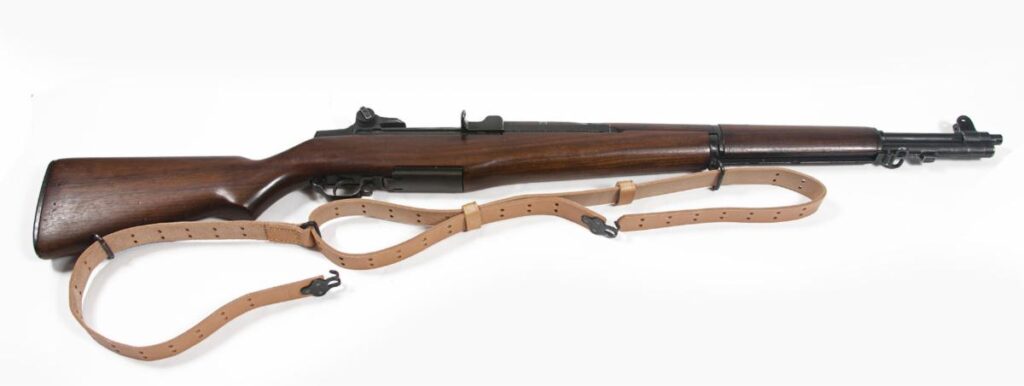About Originals
To date, we have never acquired the original Ordnance specifications for the M1907 or BAR slings. Likewise, there is scant information online or in the numerous books on US military rifles. The best description I’ve found, albeit one paragraph, is in Joe Poyer’s book on the M1903 Springfield rifles.
So, all information posted here was gleaned from poring over originals in order to copy them as closely as possible.
The M1907 Sling was made during both World Wars. The US government has contracted limited batches postwar for ceremonial and drill rifles. It is also probably the most reproduced military sling in history- it’s impossible to say how many have been made in the last 40 years.
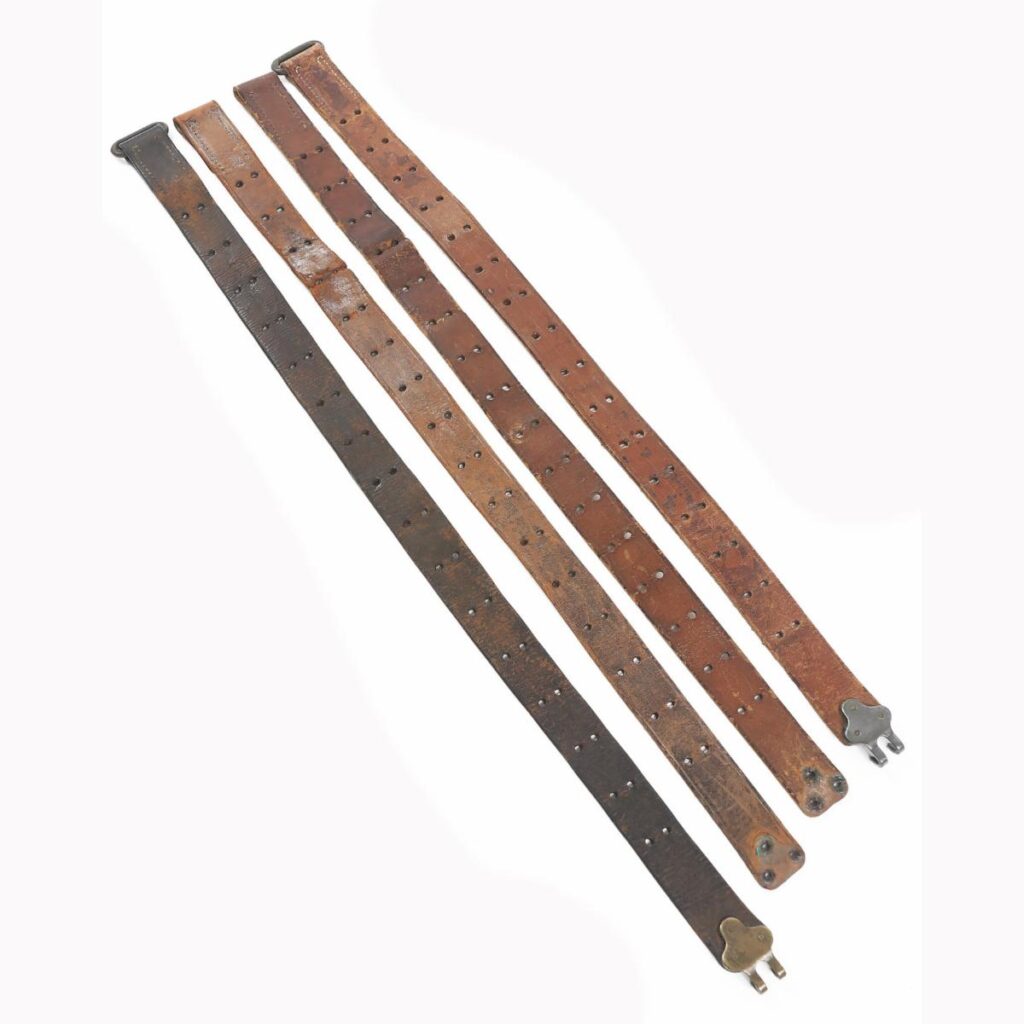 Variances in length of the short strap shown.
Variances in length of the short strap shown.
Description: The M1907 is a leather rifle sling, designed to provide a support for more accurate shooting as well as carrying the rifle.
The leather is undyed, veg tanned, and typically 8-9 ounces thick. When new, it’s very light tan, nearly white. The Army recommended using neatsfoot oil during cleaning- this, as well as exposure, sweat, powder residue, and dirt quickly darkened the leather. Heavily used examples are dark brown- a color that compares well to Crayola’s “burnt umber”.
The sling consists of two 1.25″ wide straps: the longer one, typically 48″ long, has 26 pairs of holes, and the shorter strap is 24″ inches long with 16 pairs of holes. The length of the straps varies up to 2 inches (longer or shorter) among different original slings I have in our collection/ hoard.
For a short time early in the War, the Marine Corps contracted their own M1907 slings- they had fewer holes, used mahogany leather and black thread. After several thousand were produced (50,000?) they switched back to the standard M1907 sling.
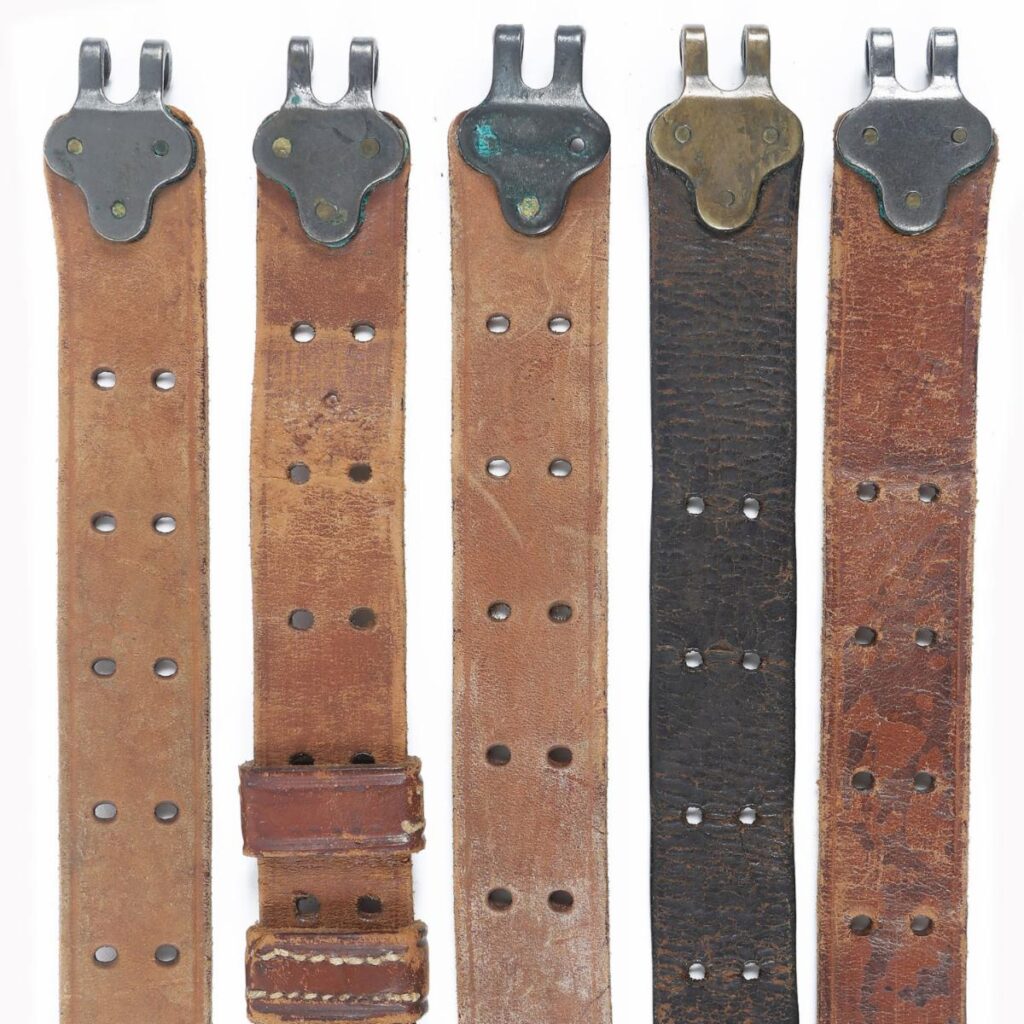 Note various shapes and locations of the adjustment holes.
Note various shapes and locations of the adjustment holes.
The adjustment holes are spaced .5 inches apart and the pairs are 1.25 inches from one another. On most slings the holes are perfectly spaced meaning they were punched with a gang die, while a few manufacturers (I’ve only seen this on WW1 slings) made them by hand. Their shape varies- round, oval or rectangular holes have been observed.
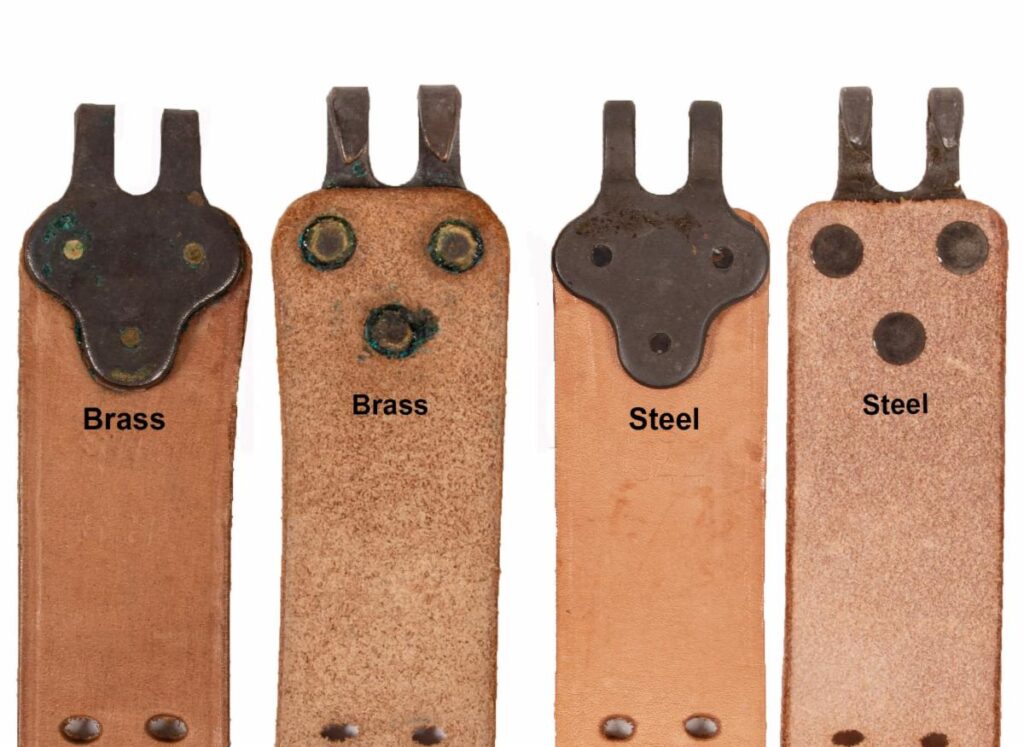 WWI and early WWII rifles used brass hardware (left)
WWI and early WWII rifles used brass hardware (left)
while most of the latter used steel (right).
The sling is adjusted via claw hooks, each of which is secured with 3 bevel headed rivets. Slings made in WW1 and early in WWII were made from brass with a chemical finish which darkens them to a dull gray or black. During 1942, brass was declared a war-critical commodity and parkerized steel hardware was substituted. Slings from both eras were used in WWII and beyond.
Like the hooks, the retaining loop (called a “D” ring in the manual) was also brass or steel.
On originals, one often finds WWII slings with brass rivets used with steel hooks. I would not be surprised if the reverse is found, or slings made with a mix of brass and steel hardware.
As for color- the brass hooks seemed to lose their finish relatively easily, which leads some enthusiasts to insist that “bare brass” is how they were made, despite this not being the case. The steel hardware varies in color from dark gray to black. Occasionally faint maker marks can be seen on the hooks.
 Keepers: Each sling comes with 2 “keepers”. These are typically 5/8″ wide and hand stitched. (No machine can stitch a closed loop.)
Keepers: Each sling comes with 2 “keepers”. These are typically 5/8″ wide and hand stitched. (No machine can stitch a closed loop.)
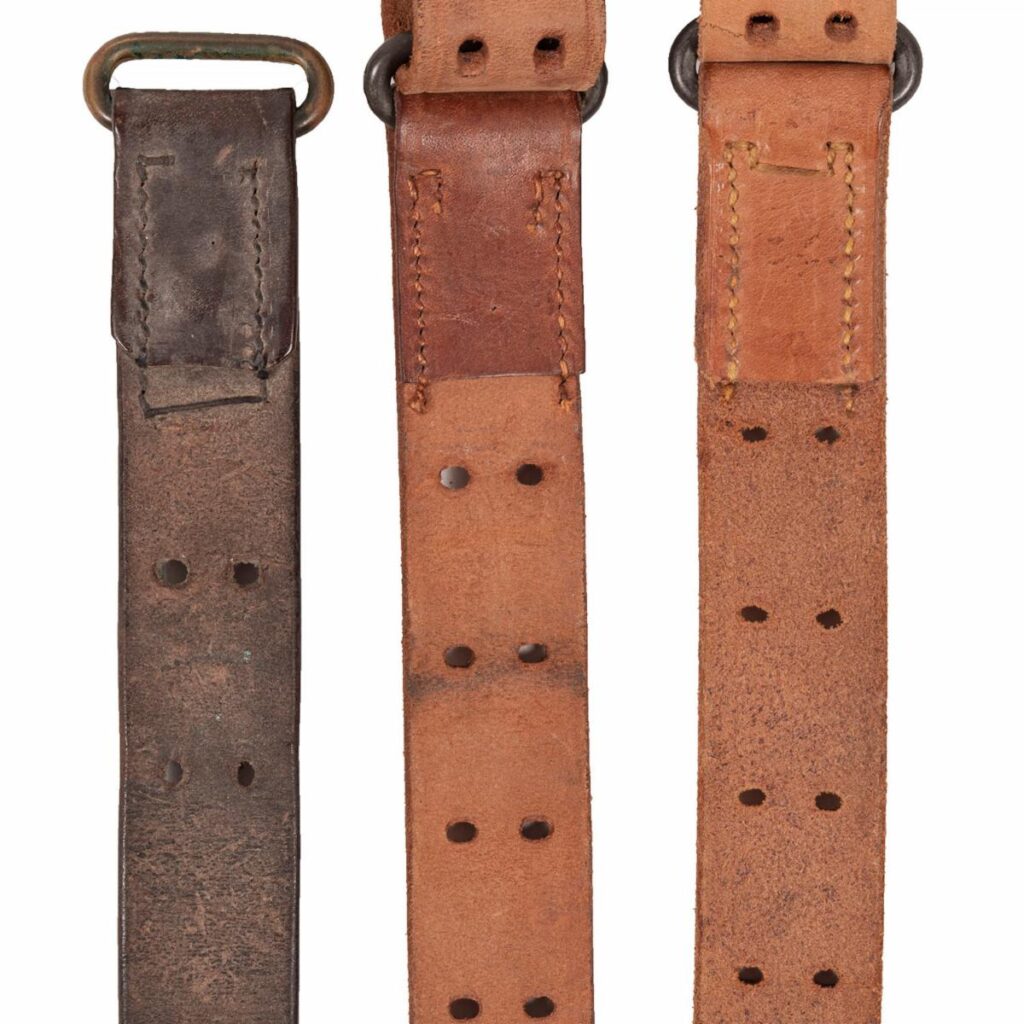
Stitching: The “D”-rings are stitched to one end of the short strap. The overlap is about 2″, with the edges scored, skived and split. The neatness of this varies by manufacturer. The stitching itself is usually done by machine, although hand stitching is present on some slings. The thread is a 3-cord linen, usually in a tan or gold color.
 Not easy to see- note that the stamps on the two slings on the left are actually upside down.
Not easy to see- note that the stamps on the two slings on the left are actually upside down.
Markings: Slings were to be marked with manufacturers name. Some WW1 slings are dated, others not, while it appears most, or all WWII slings have both.
Even on new condition slings, crisp and clear markings are quite rare on original examples that I have seen. The ones above are typically faint and very difficult to see. Boyt (not pictured) and Hickok slings tend to be more clearly marked than others. Were we to mark ours this poorly, 50% would get returned.
I think that’s it. Someday perhaps we’ll find the Ordnance spec which would be cool, but until then we’ll have to be content with this method. In all reality, when we do find the specs for a piece of US gear there’s rarely any great revelations- just a few “ah ha’s” and “cool’s”.
